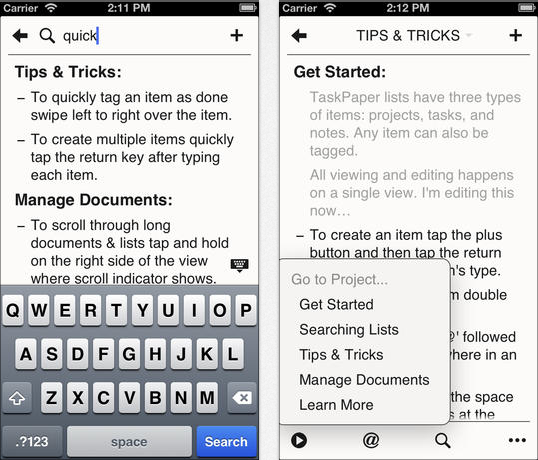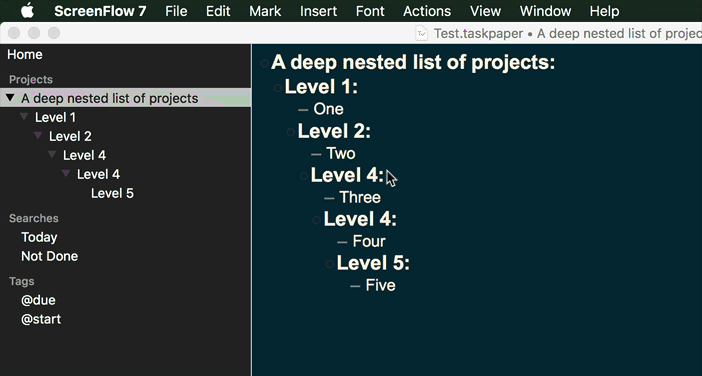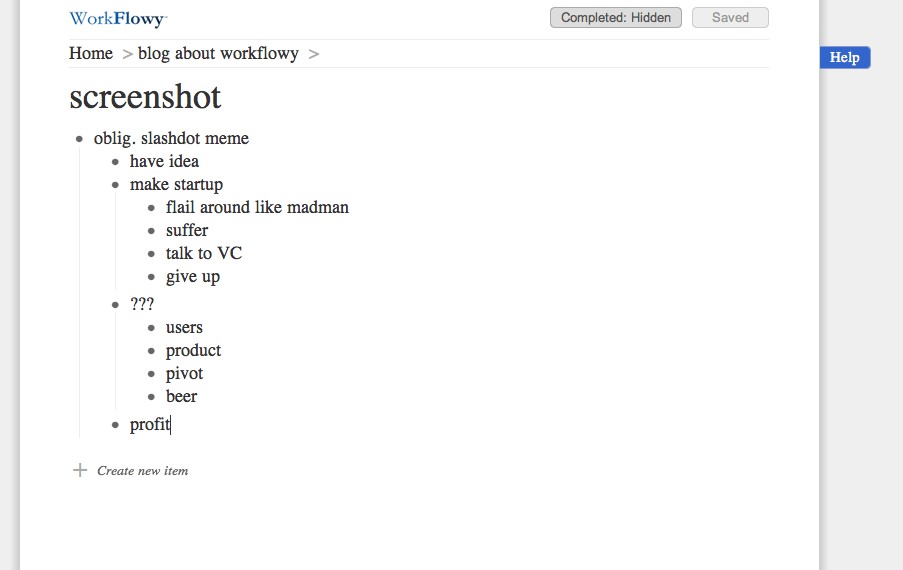

- #Taskpaper vs. workflowy skin#
- #Taskpaper vs. workflowy windows 10#
- #Taskpaper vs. workflowy pro#
- #Taskpaper vs. workflowy free#
- #Taskpaper vs. workflowy mac#
Or, you can alternatively use the mini-check-box on the left column, which will basically add the context to the action without having you typing it.Īs you can see, TaskPaper is really simple. When you tag an action with it basically mean that you’ve finished that action: One context deserve special attention and that is the context. In a very small and lightweight task management system you can get along with that, and thus implement the GTD workflow, but keep in mind that this is not pure GTD. You can “swallow” the tags as real GTD contexts, if you really want, but they aren’t. The main use of tags in TaskPaper is putting all the actions from within one tag together: Once a context added, it is automagically selected if you want to add contexts to other actions: The contexts I added are and You can have multiple contexts assigned to a single task. You can do this by putting in front of the tag / context, whenever you want in the body of the task: Each task can be assigned to a context (and now we are starting to borrow some concepts from GTD) or tag. Once a project added you can add tasks to it, by using “Option + Enter”:Įasy as pie, as you can see, and you can go like this forever, adding as many tasks as you feel comfortable with. Adding a project is achieved by “Alt + Option + Enter”. You can use TaskPaper with your keyboard if you are, like me, a keyboard and shortcuts fan. In that file you can have multiple projects, each project with its tasks. When you open TaskPaper you are presented with a screen like this:Ī paper is just a file that could be managed in one instance of TaskPaper. The workflow is structured in papers, projects, and tasks. So, here we are, trying to have a short review of TaskPaper. I am not a huge fan of plain text lists, most of the time I tend to implement all the concepts in GTD, including Next Actions, Contexts and Projects, but having a lightweight task management system could be useful sometimes.

I discovered the application several months ago, when it was included in a bundle at MacHeist , and that should point from the beginning that TaskPaper is a paid application. TaskPaper has a long history of reviews and good reactions.
#Taskpaper vs. workflowy mac#
I also opened up OmniOutliner for the Mac and the templating and weird font-level formatting just made me angry at it all over again.When it comes to lightweight task managers, on Mac, especially, you think immediately at TaskPaper, an application provided by Hogbaysoftware. (But I don’t want to scratch the surface to find out.)
#Taskpaper vs. workflowy skin#
Dynalist seems a more comprehensive (and complicated) product, but I think that Workflowy was easier to work with, and faster, so for now I think I like it a bit more.Ĭheckvist still seems uglier and more ungainly, though perhaps that’s only skin deep. I pasted a TaskPaper document as well as an OMPL file from my clipboard.
#Taskpaper vs. workflowy free#
I have free accounts on both services and just decided to try them out again in the web versions on my Mac. Check out their monthly blog to see what they’ve been doing: Having said that, they are making constant improvements. If they did, I’m sure the mobile experience would be much better. It has been clear from the beginning that the Dynalist developers don’t really use their own app on mobile, and certainly not on iOS. I prefer Dynalist, but agree that if I were just selecting between the two iOS apps right now I might use Workflowy instead. I don’t think I could do all this with Workflowy. Dynalist is a great way to pick up a file needed for a task and quickly move it over to another machine.
#Taskpaper vs. workflowy windows 10#
The web version in Edge on Windows 10 is great for me at work, where I do not have a Mac-I can drag emails from Outlook, files, etc., and set up tasks as calendar events with the Google calendar integration. I use Dynalist mainly on Mac and Windows 10, and find I’ve been using it more. Workflowy’s big strength to me is the single tree idea, and the way it really handles extremely long outlines very, very well. I’ve used both, and other tools like Checkvist. Would appreciate any thoughts on others who have used both. My calendar does diary, my files are in icloud. In the end I miss the simplicity of Workflowy. I also found the line change from normal to edit mode extremely annoying when editing a lot of entries. The dates option is more problematic than useful as dated things usually need export, which is another major problem for me with Dynalist. I’ve also come to realise that I don’t use the wiki-links, or attach files much. As this is my mobile tool it creates a lot of friction.

#Taskpaper vs. workflowy pro#
I think the main reason for my switch back is that dynalist on an iPad Pro is woeful. I then switched to Dynalist for the last year and hardly use it at all. I used Workflowy for a few years and it was my goto app.


 0 kommentar(er)
0 kommentar(er)
